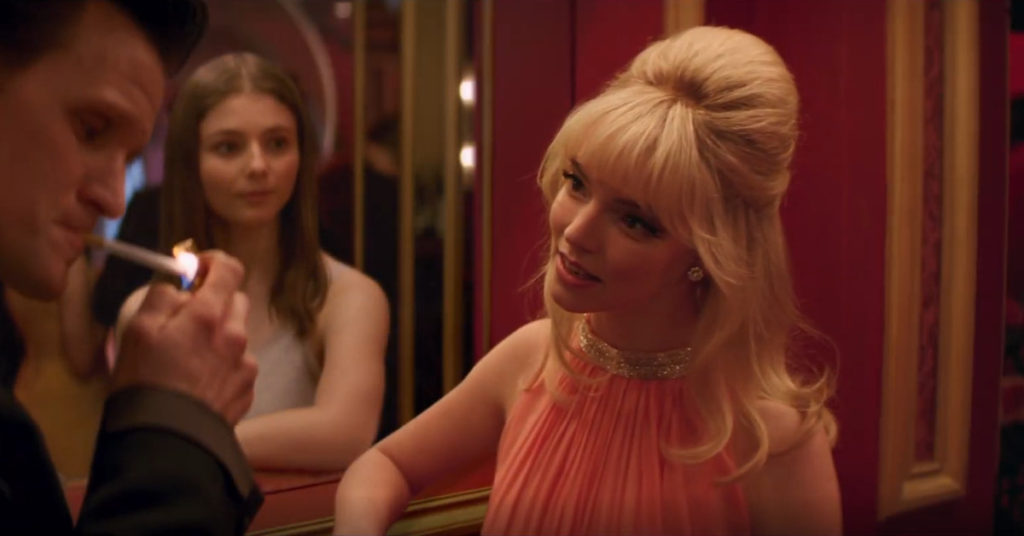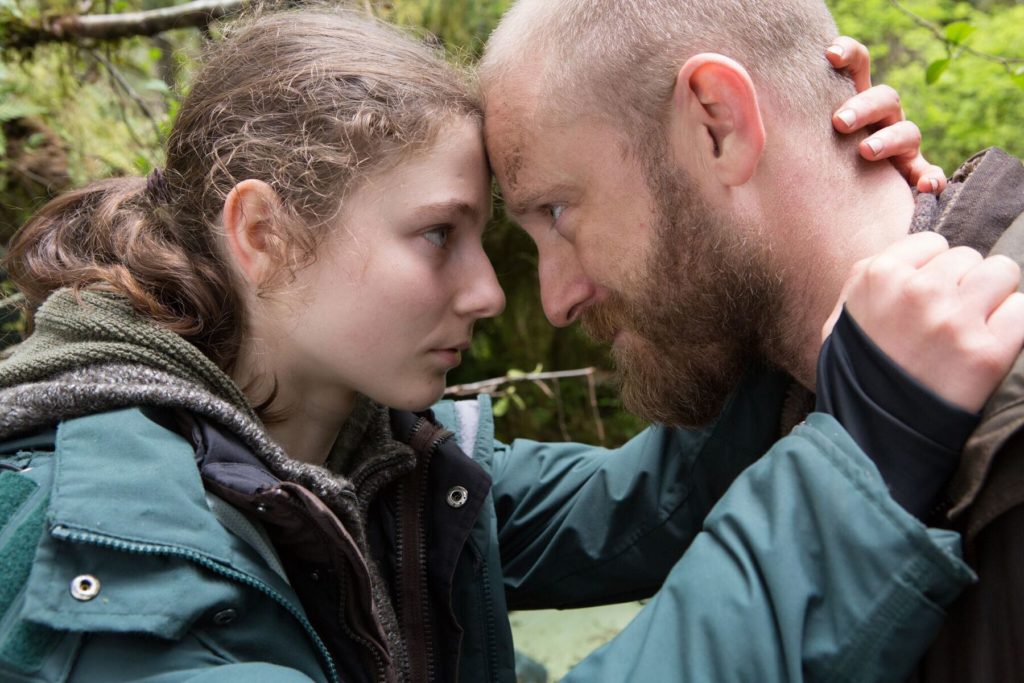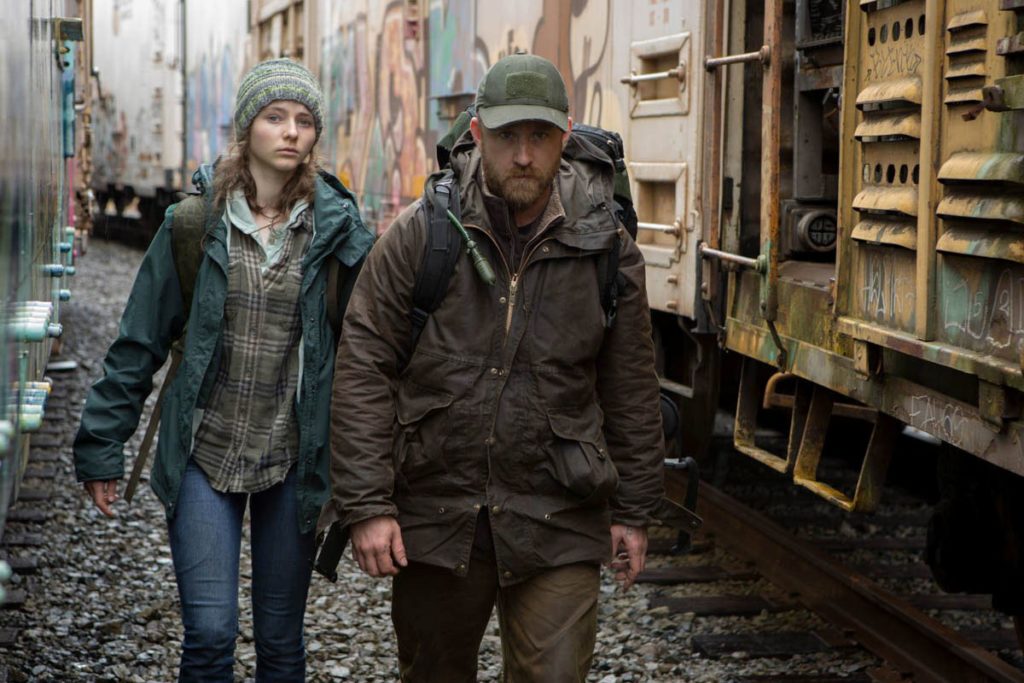
In Edgar Wright’s Last Night in Soho, the contemporary fashion student Ellie (Thomasin McKenzie) moves from a sheltered upbringing in rural Cornwall to London, but finds herself ill-suited for a boisterous college dorm. She rents her own modest digs and seems magically transported to her fantasy Mod London of the 1960s, where she finds a would-be alter ego, the cool and confident Sandy (Ana Taylor Joy). But she also finds the dark side of the London scene and a fifty-year-old violent incident that haunts her very bedsit.
Through Ellie’s eyes, the story shifts between today’s London and that of 1965. Edgar Wright brilliantly weaves Ellie and Sandy into scenes and shots together. Wright also gets the period and place just right – you just expect Oliver Reed or David Hemmings to step into the picture at any moment (or Terence Stamp).
Is Ellie in an alternative reality – or fantasizing – or hallucinating? Ellie has a rich fantasy life, as well as a “gift of seeing things?”. Of course, she’s also the right age for a psychotic breakdown, and she has a disturbing family history of mental illness.
Last Night in Soho begins as the is she going crazy? subgenre of horror, and then morphs onto a straight horror movie. Wright shrewdly waits to the last minute before revealing who the evil force really is.
Thomasin McKenzie, now age 22 after juvenile roles in Leave No Trace and Jojo Rabbit, projects an other-worldliness – so, if anyone could happen upon a portal to another time and place, it’s McKenzie
It sure is fun to watch the charismatic Ana Taylor Joy (The Queen’s Gambit, Thoroughbreds). Taylor Joy seems like the quintessential Brit, but she is of Argentine-Spanish heritage, lived her first six years in Argentina and her first language was Spanish.
Matt Smith is good as a guy with both charm and cruel lethality. Smith was superb in a much different role – the young married Prince Philip in 20 episodes of The Crown., and also did 54 episodes of Dr. Who as The Doctor.
I love Terence Stamp. Stamp, of course was a Pretty Boy star during the actual 1960s (Billy Budd, The Collector, Far from the Madding Crowd). I’ve felt that his best work has been in his middle age and since (The Hit, The Limey, The Adjustment Bureau). Here in Last Night in Soho, still ith striking features and dead-cold eyes, he looks dangerous from our first glimpse of him.
Speaking of the Swinging London of the 1960s, no woman was more symbolic than Diana Rigg, famous for her role as Emma Peel in The Avengers. Last Night in Soho was Rigg’s final screen performance.
Another 60s stalwart, Rita Tushingham (A Taste of Honey and Doctor Zhivago), also appears.
Edgar Wright broke out with the delightful Shaun of the Dead and Hot Fuzz (and the less funny The World’s End) before showing us all in Baby Driver that he was more than a low-brow funnyman.
Last Night in Soho is a clever, entertaining and sometimes artsy horror movie, but in the end, it’s just a horror movie.


